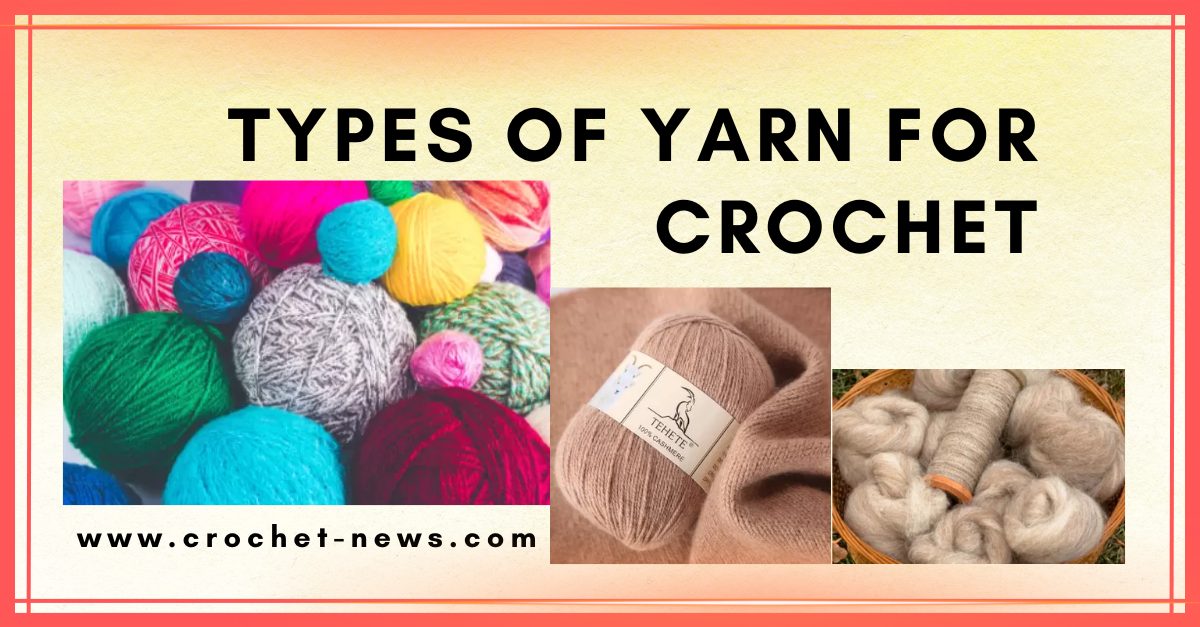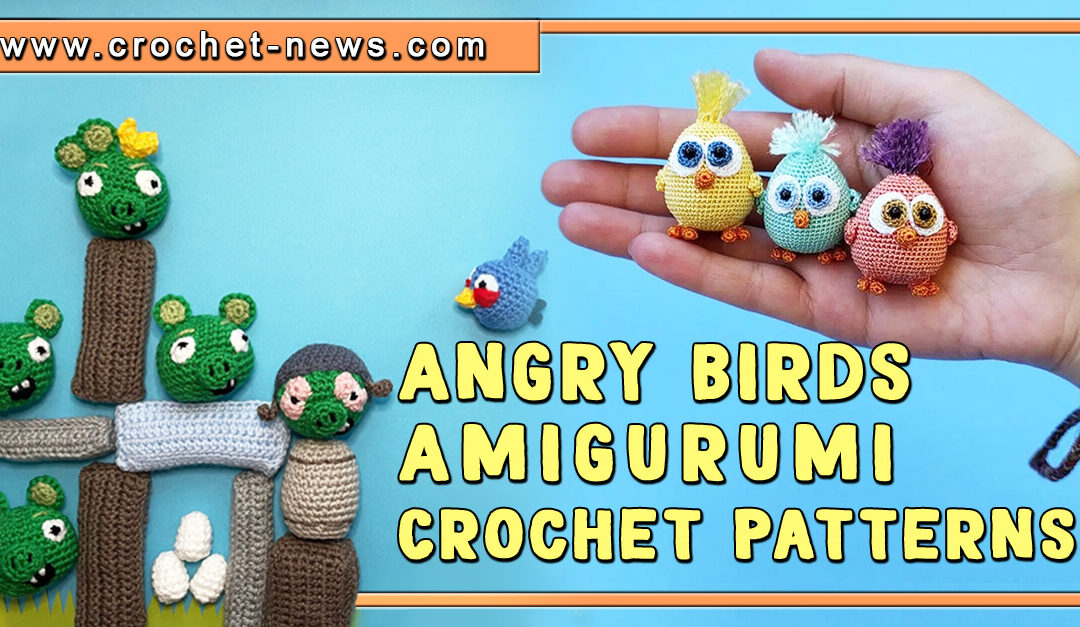When crocheting, you can choose from many different types of yarn. Yarn comes in different weights, textures, and fibres. Choosing the right type of yarn can be confusing at times. If you have any doubts, check the pattern to see what it recommends.
Continue reading to learn more about the different types of yarn. I will explain their makeup and their uses.

What are the Types of Yarn for Crochet?

Yarn is made from either natural fibres, synthetic fibres, or a blend of both.
- Natural Yarn
Natural fibers are fibres made from plants and animals. Plant fibres can come from items such as bamboo and cotton. You can also find natural fibres made from silk which is created by the silkworm. Animal fibres often come from sheep and alpacas. Items made using animal fibres typically require special care.
o Wool
o Merino Wool
o Alpaca
o Cotton
o Silk
o Cashmere
o Bamboo
- Synthetic Yarn
Synthetic fibers are manmade. They are made from plastic. You can find acrylic, polyester, nylon, and rayon yarn. Synthetic fibres are easier to care for than animal fibres.
o Acrylic
o Polyester
o Nylon
o Rayon
- Blended Yarn
Blended yarn is made from a mixture of both natural fibres and synthetic fibres. Blending fibres can improve the characteristics and texture while reducing cost.
What are the Different Types of Yarn Fibers?
Below is a list of the most common types of yarn fibres. I have included a variety of natural, synthetic, and blended.
1. Wool
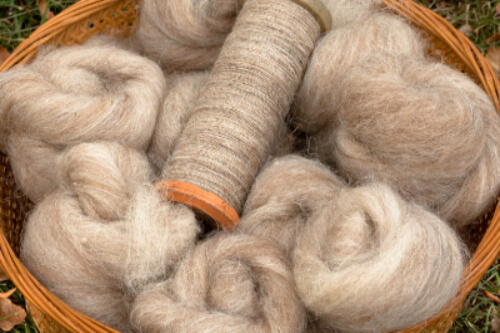
Wool is often rough and itchy. It can get softer after washing. It is made from the hairs of sheep. Wool is great for winter projects since it is warm and durable. It can be used to make items such as sweaters, gloves, socks, hats, scarves, and cowls. Some people are not able to wear wool.
Pieces made from wool can be washed in a washer if there is a wool setting. If not, it should be gently washed by hand using a detergent made for wool. Wool should be laid flat on a drying rack and left to air dry.
2. Merino Wool

Merino wool is a very soft wool. It is made from merino sheep. Merino wool is ideal for cold weather projects that touch the skin such as gloves, hats, scarves, cowls, and sweaters.
Merino Wool is machine washable on a gentle cycle using cool or warm water. It can be dried in the drier using low heat; however, we do not recommend it. The drier can damage the fibres and decrease the life span.
3. Alpaca
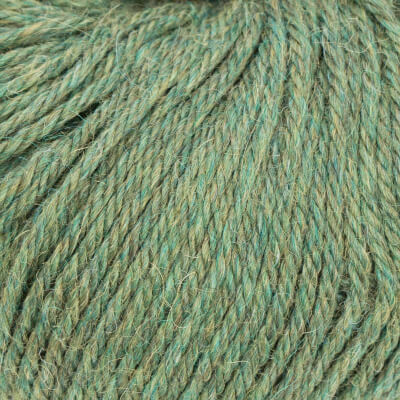
Alpaca fibres are extremely soft and luxurious. It is made from the hairs of alpacas. Alpaca hair is very fine and 5 times warmer than wool. It is available in 22 natural colours. Alpaca yarn is great for any cold weather project that will sit against the skin. And since it is hypoallergenic, it is a better choice than wool for people with allergies.
Alpaca yarn can be washed in the washing machine on either the wool or gentle cycle using cold water. Even though it is machine washable, it is best to wash it by hand. Lay the item flat on a drying rack and allow it to air dry.
4. Cotton
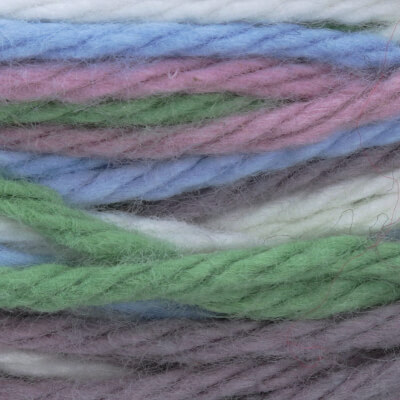
Cotton yarn is made from 100% cotton. It is one of the oldest types of materials. It is breathable and durable. Even though it is one of the most loved types of yarn, it can be hard to work with. The fibres are slippery making it hard to keep tension. Cotton is often used to make household items like towels, potholders, rugs, washcloths, and more.
Cotton fibres are machine washable. You can wash items using cool or warm water. When drying your projects in the dryer, do not use high heat. High heat can shrink the yarn and damage the fibres.
5. Silk

Silk yarn is a luxurious material. It is made by silkworms. The cocoons woven by the silkworms are gathered and carefully unwound into single threads of silk. Once the threads are separated, they are attached together to create length and interwoven to create thickness.
Silk yarn can be used to make a variety of lightweight projects. You can find patterns such as tops, shawls, and scarves.
6. Cashmere
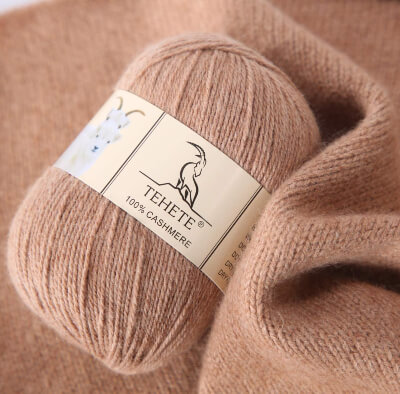
Cashmere is a type of wool. The fibres are fine, silky, and luxurious. Cashmere is made from kashmir and pashmina goats. It is delicate and lighter than wool. Since the fibres of cashmere are extremely fine, they are often combined with other natural fibres. You can use cashmere yarn to make cardigans, scarves, cowls, etc.
Cashmere is very delicate. It can be machine washed on the wool setting using a special detergent. Even though cashmere can be machine washed, I would always recommend gently washing it by hand, so the fibres are not damaged. Cashmere must be left to dry naturally. Do not put it in the dryer.
7. Bamboo
Bamboo fibres are made from bamboo. The fibres are eco-friendly. Unlike cotton, once the fibres are harvested, the bamboo grows back from the existing roots. Bamboo yarn fibres are lightweight and smooth.
Projects made with bamboo yarn are extremely soft. The yarn is great for warm weather projects. You can find patterns such as tops, shawls, scarves, and cowls.
8. Manmade Yarns
Manmade yarns such as acrylic, polyester, nylon, and rayon are made from petroleum-based projects. The chemicals in the petroleum are specially treated. This process creates polymers. The polymers are then formed into long fibre threads. Since the fibres are plastic, they should not be used for any project that can melt..
Manmade yarns are inexpensive, hypoallergenic, durable, and easy to clean. Most are machine washable and dryable. However, you do not want to use hot water or high heat.
9. Mohair Yarn
Mohair yarn is known for its soft and luxurious feel. It is incredibly warm and lightweight, making it ideal for creating cosy cold weather garments and accessories such as sweaters, scarves, and hats.
Items made from mohair yarn should be hand washed in cool water using a gentle detergent. Avoid harsh agitation or wringing, as it can cause the fibres to felt. After washing, gently squeeze out excess water and lay the item flat to dry on a clean towel.
Different Yarn Weights
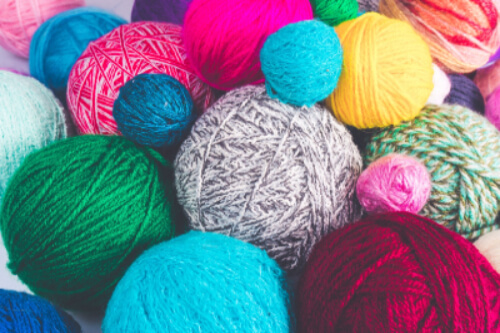
Yarn weight is the term used to describe the thickness of the yarn. It does not have to do with the actual weight. This can be very confusing for new crocheters.
WE HOPE THAT OUR ARTICLE ON THE DIFFERENT TYPES OF YARN IS USEFUL.
And head on to our Facebook Page for easy and fun crochet patterns. We also recommend you check out these articles: Crochet Stitches, Crochet abbreviations, Guide to Crochet Thread Sizes, Crochet Sets and Crochet Patterns for Beginners help you with your crochet journey.
If you came here to learn more about the types of yarn for crochet, I hope you now have a better understanding. There are many types of yarn fibres and weights to choose from. The types of yarn you will end up using are often determined by the project you are working on.

